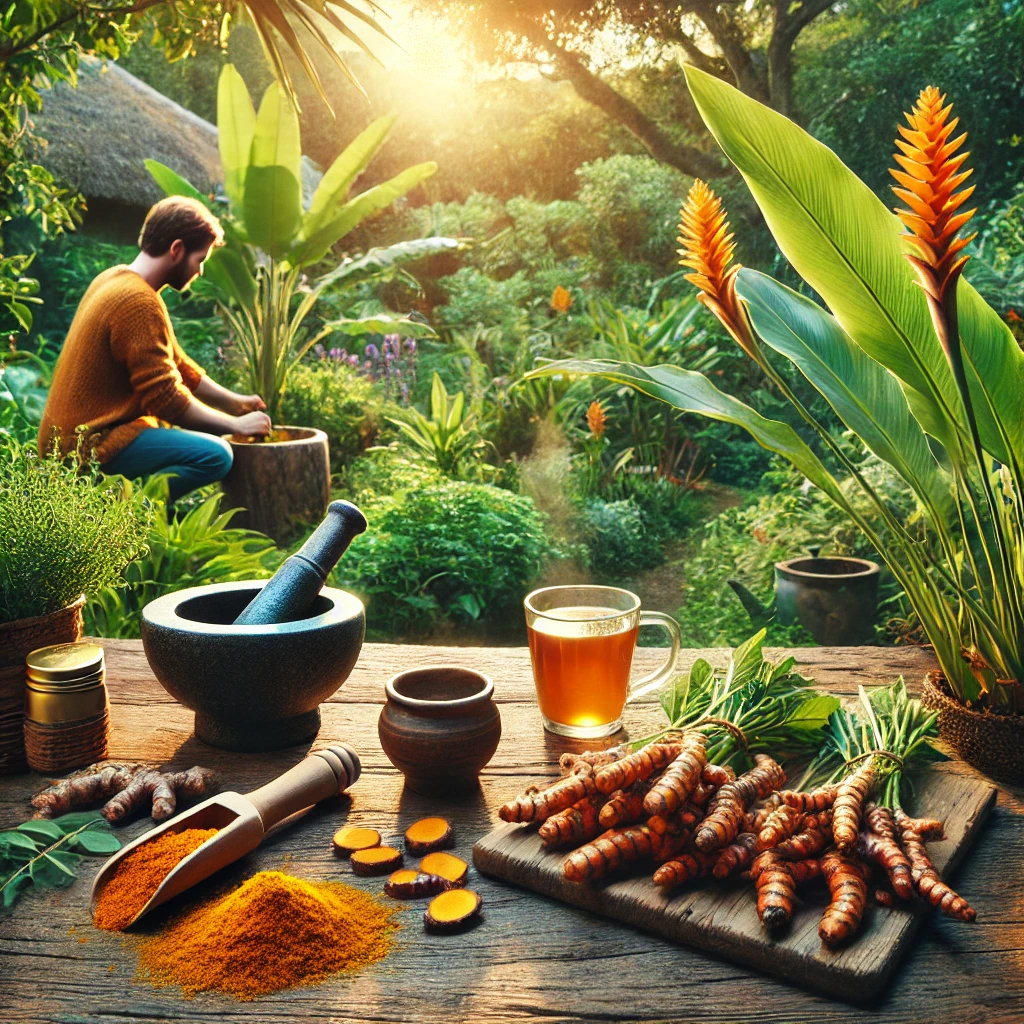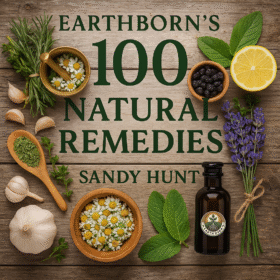
Turmeric is a tropical rhizome that thrives in South Africa’s warm climate, making it an excellent addition to local gardens. Beyond its culinary uses, turmeric offers medicinal benefits and adds aesthetic value to your garden with its lush foliage and attractive flowers.
Cultivation Guide for South Africa:
- Climate and Planting Time:
- Ideal Conditions: Turmeric flourishes in temperatures between 20°C and 35°C. In South Africa, it’s best to plant turmeric in early spring (September to October) when the soil has warmed sufficiently.
- Soil Preparation:
- Soil Type: Opt for fertile, well-drained soil enriched with organic matter. A slightly acidic pH between 6.1 and 6.5 is ideal.
- Preparation: Incorporate compost to enhance soil fertility and structure.
- Planting Rhizomes:
- Rhizome Selection: Choose fresh, firm rhizomes with visible buds.
- Planting Depth: Plant rhizomes about 5 cm deep with buds facing upwards. Space them 20 to 25 cm apart to allow adequate growth.
- Light and Watering:
- Sunlight: Turmeric thrives in light or partial shade. In hotter regions, providing some afternoon shade can prevent leaf scorching.
- Watering: Maintain consistently moist soil, especially during the growing season. Avoid waterlogging, which can cause root rot.
- Fertilization:
- Feeding: Apply a balanced organic fertilizer during planting and side-dress with compost or a general-purpose fertilizer every few months to support growth.
- Pest and Disease Management:
- Common Issues: In hot, dry weather, spider mites can be a problem. Spraying with water mixed with garlic oil can help manage them. In very moist, hot weather, fungal diseases can affect the leaves. Spraying with a mixture of 1 part milk to 4 parts water can prevent this.
Harvesting:
- Timing: Turmeric is typically ready for harvest 8 to 9 months after planting, usually in late autumn (April to May). Signs include the yellowing and drying of leaves.
- Method: Carefully dig up the rhizomes, clean them thoroughly, and let them dry in a cool place. Use damaged pieces first, as they won’t store as long.
Medicinal Uses and Precautions:
Turmeric is renowned for its anti-inflammatory and antioxidant properties, primarily due to its active compound, curcumin.
- Common Uses:
- Arthritis Relief: May reduce joint inflammation and pain.
- Digestive Aid: Traditionally used to alleviate bloating and gas.
- Heart Health: Potential to improve cardiovascular function.
- Dosage:
- General Guidance: Studies suggest that doses of 500–2,000 mg of turmeric per day may have potential benefits, particularly in extract form.
- Culinary Use: Incorporating turmeric into daily cooking is generally safe and beneficial.
- Precautions:
- Medication Interactions: High doses of curcumin, as found in concentrated turmeric supplements, can interact with certain medications, including blood thinners and chemotherapy agents.
- Side Effects: Excessive consumption may lead to gastrointestinal issues or allergic reactions.
- Pregnancy and Gallbladder Issues: Avoid high doses during pregnancy and in individuals with gallbladder disease.
If you’re taking blood-thinning medications such as warfarin, clopidogrel, or aspirin, it’s important to exercise caution with turmeric consumption. Turmeric, particularly its active compound curcumin, may enhance the effects of these medications, increasing the risk of bleeding.
By following the following precautions, you can help minimize the risk of adverse interactions between turmeric and blood-thinning medications.
Recommendations:
- Consult Your Healthcare Provider: Before incorporating turmeric supplements or significantly increasing dietary turmeric, discuss it with your doctor or pharmacist to evaluate potential interactions.
- Monitor for Bleeding Signs: Be vigilant for symptoms such as unusual bruising, prolonged bleeding from minor cuts, blood in urine or stool, or persistent nosebleeds. If these occur, seek medical attention promptly.
- Limit Supplement Use: Given the potency of supplements, it’s advisable to avoid turmeric or curcumin supplements unless specifically recommended by your healthcare provider.
- Moderate Dietary Intake: Using turmeric as a spice in cooking is generally considered safe. However, avoid excessive consumption, especially in forms like concentrated teas or golden milk, without medical guidance.
- Regular Blood Monitoring: If you consume turmeric regularly, ensure consistent monitoring of your blood’s clotting parameters, such as the International Normalized Ratio (INR), to detect any significant changes.
By following these guidelines, South African gardeners can successfully cultivate turmeric, enjoying its culinary delights and health benefits.


 **Meet Sprout!** Sprout is your friendly gardening companion at Earthborn, always ready with helpful advice on plant care, medicinal herbs, and natural gardening solutions. From seedling to harvest, Sprout provides expert guidance to nurture your garden and your well-being—making gardening easy, fun, and naturally rewarding.
**Meet Sprout!** Sprout is your friendly gardening companion at Earthborn, always ready with helpful advice on plant care, medicinal herbs, and natural gardening solutions. From seedling to harvest, Sprout provides expert guidance to nurture your garden and your well-being—making gardening easy, fun, and naturally rewarding.
